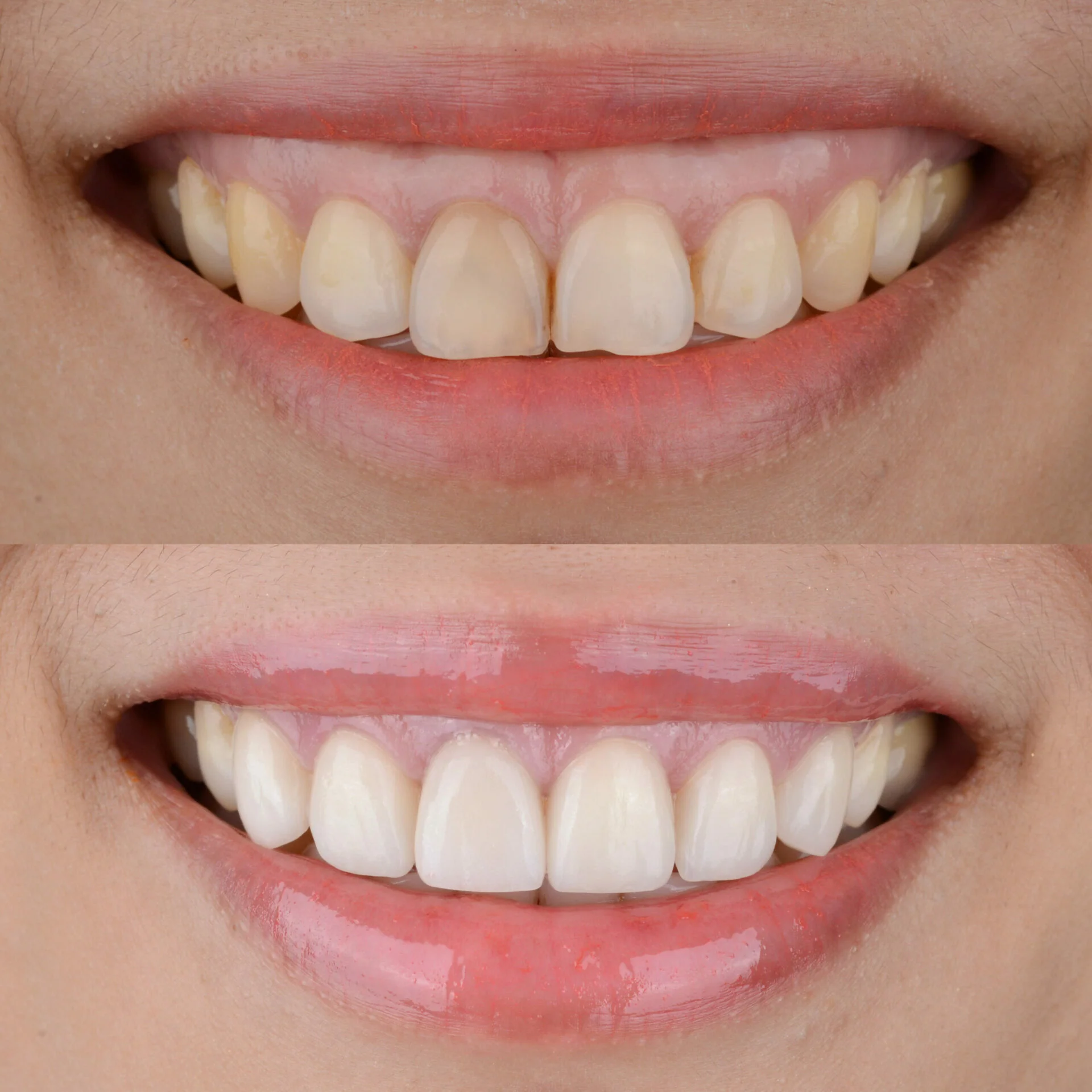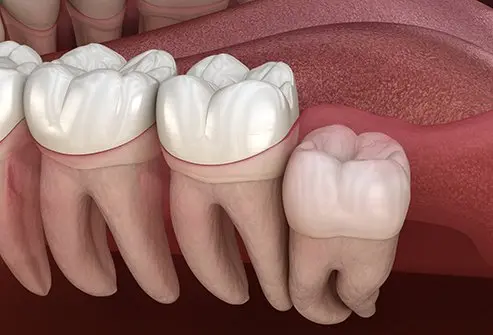Picasso Dental Clinic Vietnam
Gummy Smile Surgery

0.5 - 2 hours
1-3 days
3-4 weeks
$200 - $500
What Is Gummy Smile Surgery?
Gummy smile surgery, medically known as gingivectomy or crown lengthening, is a cosmetic dental procedure designed to reduce excessive gum tissue visibility when you smile. A gummy smile occurs when more than 3-4 millimeters of gum tissue shows above your upper teeth, making your teeth appear shorter than they actually are and creating an unbalanced tooth-to-gum ratio.
At Picasso Dental Clinic, we offer several treatment approaches depending on the cause of your gummy smile:
Removal of excess gum tissue using advanced laser technology
Recontouring both gum tissue and underlying bone structure
Surgical adjustment of lip movement to reduce gum exposure
Orthodontics paired with gum surgery for comprehensive results

Who needs gummy smile surgery? Anyone who feels their smile shows too much gum tissue and desires a more balanced, aesthetically pleasing appearance is a good candidate for this transformative procedure.
The Gummy Smile Surgery Process: Step-by-Step
Comprehensive Consultation & Digital Smile Design
Your journey begins with an in-depth consultation with one of our cosmetic dentistry specialists. We photograph your smile from multiple angles and use Digital Smile Design (DSD) technology to create a virtual preview of your results. This advanced software allows you to see your "before" and "after" smile, helping us understand your aesthetic goals precisely.
Pre-Treatment Preparation (1-2 days before surgery)
If your gummy smile requires surgery, we ensure your mouth is in optimal condition. This may include professional teeth cleaning to remove plaque and tartar, ensuring a sterile environment for surgery. We'll also conduct blood tests if required for more extensive procedures. You'll receive detailed pre-operative instructions including dietary recommendations and medication guidelines.
Anesthesia & Comfort Management
Your comfort is our priority. We administer local anesthesia to completely numb the treatment area. Many patients report feeling no pain during the procedure—only gentle pressure. For anxious patients, we offer sedation options to ensure a relaxed, stress-free experience. Our English-speaking team maintains constant communication throughout the procedure.
Laser Gingivectomy or Crown Lengthening (45-90 minutes)
Using our state-of-the-art diode laser technology, your dentist precisely removes excess gum tissue following the design plan created during consultation. The laser simultaneously cuts and cauterizes tissue, which means:
- Minimal to no bleeding during surgery
- Reduced post-operative swelling
- Faster healing time
- No sutures (stitches) needed in most cases
- Lower infection risk
For crown lengthening cases where bone recontouring is necessary, your dentist will gently reshape the underlying alveolar bone to expose more tooth structure while maintaining biological width (the natural space between bone and gum). This ensures long-term gum health and prevents tissue from growing back.
Immediate Post-Procedure Care
Immediately after your procedure, we'll provide:
- Ice packs to minimize any mild swelling
- Detailed aftercare instructions in English
- Prescription pain medication (typically over-the-counter NSAIDs are sufficient)
- Antibacterial mouthwash
- Emergency contact information
- Follow-up appointment scheduling
Most patients can return to their hotel within 1-2 hours and resume light activities the same day.
Healing & Follow-Up (7-14 days)
Initial healing occurs rapidly with laser treatment. Most patients experience:
- Days 1-3: Mild tenderness, slight swelling (easily managed with medication)
- Days 4-7: Significant improvement, swelling subsides
- Days 7-14: Gums heal to near-normal appearance
- Weeks 3-6: Complete tissue healing
- Months 3-6: Final gum position stabilizes
We schedule follow-up appointments to monitor healing. For international patients, we offer virtual check-ins via WhatsApp or Zalo, supplemented by an in-person visit if you're still in Vietnam.
Final Results & Optional Cosmetic Enhancement
Once your gums have fully healed (typically 3-6 months), you'll see your final smile transformation. At this point, many patients choose to complement their gummy smile correction with:
- Porcelain veneers for additional whitening and shaping
- Teeth whitening for brightness
- Minor tooth reshaping for perfect symmetry
Gummy Smile Surgery Cost
At Picasso Dental Clinic, we believe in complete price transparency. Unlike many Western clinics where pricing is hidden until your appointment, we provide clear, upfront costs so you can plan your dental tourism journey confidently.

-
Laser Gingivectomy
$100 - $500 -
Crown Lengthening
$100 - $200
Note: Prices include consultation, local anesthesia, laser treatment, post-operative medication, and standard follow-up visits.
Final costs vary based on individual case complexity.
Why Picasso Dental Clinic?
Why Patients Trust Us for Gummy Smile Correction
Didn’t Find the Answer? Ask us Questions
Call us, Whatsapp or email us!
Mon-Sun: 8.30 AM - 6.00 PM
Common Questions About Gummy Smile Surgery in Vietnam
You're an ideal candidate if you show more than 3-4mm of gum tissue when smiling and are bothered by the appearance. Good candidates should have:
- Overall good oral health (no active gum disease or tooth decay)
- Realistic expectations about results
- Sufficient tooth structure beneath the gums
- Good general health with no bleeding disorders
- Non-smoker or willing to stop smoking before/after surgery
During your free consultation at Picasso Dental, we'll examine your specific case and determine if you're a suitable candidate. We'll also identify the underlying cause of your gummy smile to recommend the most effective treatment approach.
The choice depends on what's causing your gummy smile:
- Gingivectomy (soft tissue removal only) is suitable if you have excess gum covering naturally-sized teeth, with sufficient bone-to-gum distance
- Crown Lengthening (gum + bone reshaping) is needed when there's also excess bone covering your teeth, or when teeth are naturally short
Our dentists use Digital Smile Design and X-rays to visualize your anatomy and recommend the appropriate procedure. Many patients need a combination approach for optimal results.
In many cases, yes, but it requires special planning. If you have existing dental work, we'll evaluate whether it can remain or needs replacement after your gum surgery. Often, the sequence is:
- Remove old restorations
- Perform gummy smile correction
- Place new veneers or crowns 3-6 months later after gums heal
This ensures your new dental work matches your corrected gum line perfectly. Discuss your existing dental work during consultation.
For international patients, we recommend:
- Minimum stay: 7-10 days (includes consultation, treatment, and initial follow-up)
- Ideal stay: 14 days (allows additional follow-up and peace of mind)
The actual procedure takes only 45-90 minutes, but allowing time for consultation, healing monitoring, and any unexpected complications is wise. Many patients extend their stay to explore Vietnam's beautiful destinations like Ha Long Bay, Hoi An, or Phu Quoc Island.
Most patients report minimal to no pain during the procedure due to effective local anesthesia. You may feel pressure or tugging sensations, but no sharp pain. After the anesthesia wears off (2-3 hours post-treatment), you might experience:
- Mild to moderate tenderness (managed easily with over-the-counter pain medication)
- Slight throbbing sensation for the first 24-48 hours
- Minimal discomfort when eating soft foods
By day 3-5, most patients report pain has subsided significantly. Our laser technology dramatically reduces post-operative discomfort compared to traditional scalpel methods.
One of the major advantages of laser gummy smile surgery is that stitches are usually NOT required! The laser cauterizes (seals) the tissue as it cuts, minimizing bleeding and eliminating the need for sutures in most cases. This means:
- Faster healing
- Less post-operative discomfort
- No need for stitch removal appointment
- Lower infection risk
In complex crown lengthening cases involving significant bone work, dissolvable stitches may be placed but will disappear on their own within 7-10 days.
Recovery varies by individual and procedure complexity, but here's the typical timeline:
Immediate (0-24 hours): Some bleeding, numbness wearing off, follow soft food diet
Days 1-3: Mild swelling and tenderness, continue soft foods, avoid hot liquids
Days 4-7: Significant improvement, resume normal diet gradually, swelling mostly gone
Days 7-14: Gums look nearly normal, return to all regular activities
Weeks 2-6: Complete soft tissue healing
Months 3-6: Final gum position stabilizes, ready for any additional cosmetic work
Most international patients can fly home comfortably 5-7 days post-treatment. Locals typically return to work within 2-5 days, depending on their job type.
For the first 48-72 hours, stick to:
- Cold, soft foods: Yogurt, smoothies, ice cream, pudding
- Room temperature purees: Mashed potatoes, applesauce, soup (not hot)
- Protein shakes: For nutrition without chewing
Days 4-7, transition to:
- Soft pasta, scrambled eggs, oatmeal
- Cooked vegetables (well-done, not crunchy)
- Soft bread, rice
After day 7, gradually reintroduce normal foods, avoiding:
- Very hard foods (nuts, hard candy, ice) for 2 weeks
- Extremely hot foods or drinks for 1 week
- Crunchy foods that could irritate gums
Vietnamese cuisine offers excellent soft food options like pho (noodle soup), chao (congee), and steamed fish: perfect for recovery!
Book Now
Ready to Transform Your Smile? Book Your Free Consultation Today
Take the first step toward the confident smile you deserve. Schedule your complimentary consultation at any of our four convenient locations across Vietnam.

